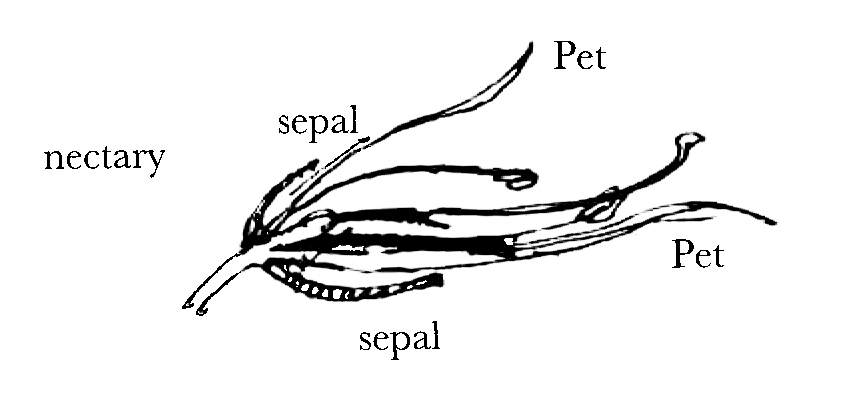Dear Dn.
I have had a pretty good examination of Leschenaultia, but have not found pollen-tubes in any part of stigma or style. I have however I think satisfied myself that the external viscid surfaces (there are 2, one on each lip) have nothing whatever to do with the stigmatic surfaces,
1 They have not the structure.
2. They are outside the bundles of nutrient Vessells of style. ∴
3 They do not & cannot communicate with conducting tissue of style.
4 There is a perfectly good & normal stigmatic surface directly communicating with the conducting tissue, where it ought to be, at the base of the cup inside, on each lip, but most developed on the smaller lip. These surfaces are bona fide structurally, ie. histologically “stigmatic”—& I have no doubt, had we fine weather & impregnated flowers, we should find pollen tubes in them.
Brown remarks that some species are impregnated after Expansion, by pollen of other flowers,—I know not on what facts he goes—others he says by pollen retained in the indusium on its closing.2
I see no flaw in your style & nectary conclusions— In most (all?) irregular flowers the greatest development of perianth & stamens is towards axis of plant (or turned away by resupination of flower) & is balanced by greater development of nectary on opposite side of flower. This appears to me to throw the curvature of the style necessarily in the position you indicate.— it is as it were pushed towards the side where the development of perianth &c is greatest & this is in
 part counteracted by the endeeavor of style as central organ to keep straight—which results in bend of stigma to nectary side. I think this is so in all plants whether they have nectaries or no— It is a case of force & direction of growth.
part counteracted by the endeeavor of style as central organ to keep straight—which results in bend of stigma to nectary side. I think this is so in all plants whether they have nectaries or no— It is a case of force & direction of growth.
Ever yrs affy | Jos D Hooker
P.S. No record of Digitalis with 5th. rud. stamen.— ask Masters.3
[Enclosure]4
There is in Herb. Hook. a specimen of a Primula collected at Over, Cheshire May 1824 by W. Wilson Esq.5 of which that excellent Brit. Botanist says,
“Primula elatior, with simple & umbellate flower-stalks,— I think this specimen (having the leaves of the proper shape assumed by Sir J. E. Smith) as a character for P. elatior would have convinced him of that being only a variety of P. vulgaris”
In Hook Herb. there seem to be all sorts of intermediates in foliage & inflorescence.
There is a good remark by H.C.W. in Hook & Arn. Brit. Flora, that all the forms of Cowslip & Cowslip–oxlip have short tomentum—6 all of Primrose & Primrose–oxlip have long villous hairs (on scape &c). I find this holds pretty well in all the Herb. Hook specimens: but is at best rather hazy character.
CD annotations
Please cite as “DCP-LETT-2774,” in Ɛpsilon: The Charles Darwin Collection accessed on